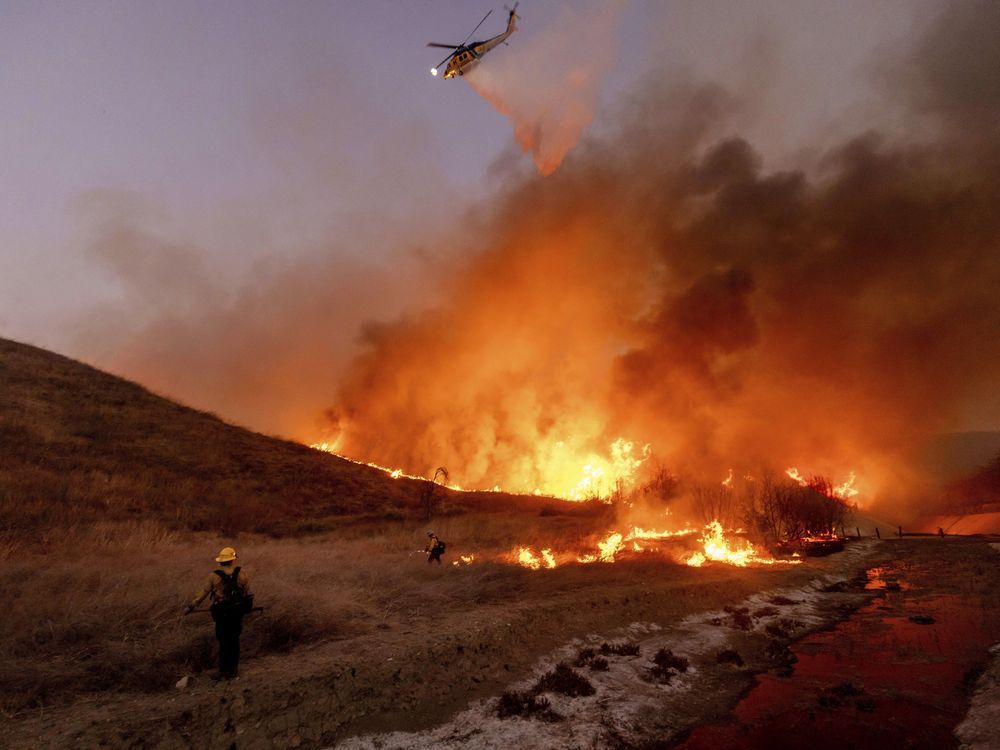It's not all his fault, but here are some of the more striking ways the country has changed compared to 2015
Get the latest from Tristin Hopper straight to your inbox
Published Jan 06, 2025 • Last updated 0 minutes ago • 7 minute read

First Reading is a daily newsletter keeping you posted on the travails of Canadian politicos, all curated by the National Post’s own Tristin Hopper. To get an early version sent directly to your inbox, sign up here.
Article content
Article content
TOP STORY
As Canada enters 2025, Justin Trudeau has now officially been prime minister across 10 calendar years; he was first sworn in on Nov. 4, 2015.
Advertisement 2
THIS CONTENT IS RESERVED FOR SUBSCRIBERS
Enjoy the latest local, national and international news.
- Exclusive articles by Conrad Black, Barbara Kay and others. Plus, special edition NP Platformed and First Reading newsletters and virtual events.
- Unlimited online access to National Post and 15 news sites with one account.
- National Post ePaper, an electronic replica of the print edition to view on any device, share and comment on.
- Daily puzzles including the New York Times Crossword.
- Support local journalism.
SUBSCRIBE FOR MORE ARTICLES
Enjoy the latest local, national and international news.
- Exclusive articles by Conrad Black, Barbara Kay and others. Plus, special edition NP Platformed and First Reading newsletters and virtual events.
- Unlimited online access to National Post and 15 news sites with one account.
- National Post ePaper, an electronic replica of the print edition to view on any device, share and comment on.
- Daily puzzles including the New York Times Crossword.
- Support local journalism.
REGISTER / SIGN IN TO UNLOCK MORE ARTICLES
Create an account or sign in to continue with your reading experience.
- Access articles from across Canada with one account.
- Share your thoughts and join the conversation in the comments.
- Enjoy additional articles per month.
- Get email updates from your favourite authors.
THIS ARTICLE IS FREE TO READ REGISTER TO UNLOCK.
Create an account or sign in to continue with your reading experience.
- Access articles from across Canada with one account
- Share your thoughts and join the conversation in the comments
- Enjoy additional articles per month
- Get email updates from your favourite authors
Article content
By almost any metric, the last decade has not been great for Canada. Rent is up, wages have stagnated, crime is worse and health-care wait times are pushing the boundaries of what is possible. But on the plus side, you’re probably paying less for your cell phone.
Below, a cursory comparison of Canada in 2015 versus the Canada of today.
Debt has doubled
According to a rolling “debt clock” maintained by the Canadian Taxpayers Federation, the federal debt on New Year’s Day stood at $1.2 trillion.
At the beginning of 2015, it stood at $612 billion. In pure dollar terms, that’s a doubling of the debt in just 10 years; the accumulated liabilities from 2015 to 2025 are about the same as the accumulated liabilities from 1867 to 2015.
But the Canadian dollar was also worth more in 2015. When adjusting to 2025 dollars, the federal debt in 2015 was equivalent to $780 billion. So in real terms, the debt has only swelled by 54 per cent.
The tech is better, cell phone bills are cheaper
In terms of material improvements to the Canadian experience, all the most obvious gains are technological: Better TVs, more streaming content, faster internet, the number of electric cars on the road has grown by about tenfold.
Advertisement 3
Article content
And according to Statistics Canada, Canadian cell phone costs — which are among the highest in the world — are down as compared to 2015. In just one year, from 2023 to 2024, they tracked cell phone costs falling by 10 per cent. Over the past five years, they estimate costs have fallen by 47 per cent.
Per capita emissions are about the same
If Trudeau is ever asked to comment on his legacy as prime minister, he’ll probably say something about climate change. The Trudeau government has leaned into climate policy harder than almost any other world government — and it’s been a major contributor to their undoing. Fewer than one-fifth of Canadians now endorse the tax in its current form.
But to look at Canada’s rate of per-capita emissions, it would be hard to notice that anything’s changed.
In 2015, the average Canadian was responsible for 20.9 tonnes of greenhouse gases. As of the federal government’s most current figures from 2022, it’s now at 18.2. That’s a reduction, but it’s a reduction that’s basically in line with trends that were already underway. Over the 10 years of the Harper government, for instance, per-capita GHG emissions fell from 23.3 tonnes in 2006 to the 20.9 counted in 2015.
By signing up you consent to receive the above newsletter from Postmedia Network Inc.
Article content
Advertisement 4
Article content
Recommended from Editorial
-

Michael Higgins: Trudeau's resignation could be imminent. Canada can't move on fast enough
-

Five numbers involved in building then scrapping a short-lived Coast Guard ship
Homicide rates are the highest since the 1990s
Statistics Canada maintains an indicator known as the Crime Severity Index. And the index launches into a pretty noticeable rise right around 2015. It bottoms out in 2014 after a nearly two-decade decline, and has been on the upswing ever since.
And the Crime Severity Index is based only on police-reported crime. If, say, Canadians aren’t reporting assaults or break-ins like they used to, the crime doesn’t get counted.
So it’s telling that the figures are even worse when it comes to homicide; generally considered the most accurate measure of crime. In 2014, Canada recorded 516 homicides — the lowest murder rate since 1966. As of the 2023 figures just tallied by Statistics Canada, it’s now up to 778 per year — which is actually a reduction from the year before, when murder rates reached highs not seen since 1992.
There’s also been a huge rise in handgun crimes. In 2014, there were 14 handgun crimes for every 100,000 Canadians. By 2022, that was up to 19.3.
Advertisement 5
Article content
Home prices are dropping from their cartoonish highs, but they’re still way up
In November of 2015 — the month that Trudeau was sworn in as prime minister — the Canadian Real Estate Association pegged Canada’s average sale price for a home at $456,186 (about $580,000 in 2025 dollars).
There was a brief period in 2022 where home prices surged to $868,400 — a near-doubling of the 2015 figures in dollar terms. But at the end of 2024, CREA calculated the average sale price as sitting at $694,411. When accounting for inflation, that’s a rise of about 20 per cent over the 2015 figures.
Rents are about the same. Going into 2015, the Canadian Mortgage and Housing Corporation reported that the average rent was $883 ($1,140 in 2024 dollars). As of the CMHC’s most recent tally, they were at $1,400. So, a 20 per cent increase in real terms.
Of course, those are both nationwide averages, so the rises are going to be much more acute in the likes of B.C. or the Toronto area. And the CMHC data only tallies what renters are currently paying — rather than the advertised rents for vacant units. Thus, if you’re not already locked into a rental agreement, you’ll be lucky to find anything listed lower than $2,000 a month.
Advertisement 6
Article content
The water on First Nations reserves is more drinkable
One of Trudeau’s campaign pledges in 2015 was to end all boil-water advisories in Canadian First Nation communities by 2020. His government missed deadlines, underspent on the program and ultimately failed to meet its goal of totally eradicating the problem. There’s also serious questions about whether Ottawa is earmarking funds to properly maintain all this upgraded water infrastructure — which is how all the boil-water advisories started in the first place.
All that said, there are now more First Nations communities in 2025 where it’s possible to drink the water than there were in 2015.
According to Environment and Climate Change Canada, in November 2015, there were 105 long-term drinking water advisories on First Nations reserves. As of November 2024, there were 31.
Overdose deaths have quadrupled
Canada did not keep federal data on drug overdose deaths in 2015; it wouldn’t be until 2016 that the crisis became bad enough for the Public Health Agency of Canada to begin keeping tabs on it. But according to a paper by the Canadian Medical Association, an estimated 2,000 Canadians died of drug overdoses in 2015 — about five per day.
Advertisement 7
Article content
As of the most recent federal data, that’s now quadrupled to 21 per day. In just the first six months of 2024, 3,787 Canadians died from opioid poisoning. What’s more, this is all occurring despite a vast government infrastructure designed to reverse fatal overdoses.
The Canada of 2015 had only a handful of safe injection sites, and the distribution of overdose-reversing Naloxone kits were in its earliest stages. In 2015, B.C.’s “take home Naloxone” program had distributed just 3,394 kits. Now, they’re handing out more than 250,000 kits per year.
The military has gotten smaller
First, the good news: The Canadian Army of 2025 can shoot down planes. It couldn’t do that in 2015; the military had spent years without what’s known as “Ground Based Air Defence.” That changed in early 2024 – in part due to the embarrassment of having troops deployed in Latvia that had to request air cover from fellow NATO members.
And spending is up. The Harper government left office with defence spending representing just one per cent of GDP – exactly half the two per cent that NATO requires of its members. It’s now about 1.5 per cent.
Advertisement 8
Article content
Nevertheless, the number of Canadians in uniform is actually lower. The size of the regular force in 2015 was about 66,400. Now it’s dropped to 63,000.
The result is a military that has more stuff, but can’t really use it due to manpower shortages. As per a December report from the department of defence, more than half of Canada’s various air, land and sea fleets are not meeting “training and readiness requirements,” largely because of a shortage of mechanics and personnel.
Life expectancy is about the same
For about the last century, Canadian life expectancy has been steadily ticking upwards. Over the course of the 1970s, for instance, the average Canadian gained an estimated two extra years of life. This trend was pretty consistent regardless of what the government did; even the years of the Second World War witnessed a net gain in Canadian life expectancy.
But 2015 is right around the time it started to plateau. That year, Canadian life expectancy at birth was about 82. Ten years later, Canadian life expectancy at birth remains around 82. The last decade has even seen the extremely unusual phenomenon of years in which the life expectancy actually goes down. The Public Health Agency of Canada blames these “stalled gains” on COVID-19 and the spike in overdose deaths.
Advertisement 9
Article content
Legal cannabis sales are obviously way up
There actually was a tiny legal cannabis market in 2015. Although most Canadians were getting their marijuana from the black market or from dodgy unlicensed “dispensaries,” there were 42,000 people who were authorized by Health Canada to purchase government-regulated medical marijuana through the mail. In 2016, these represented $239.4 million in total sales.
Sales of legal cannabis are now at about $4.7 billion per year. Even when accounting for inflation, that’s a rise of about 1,500 per cent. Needless to say, no other segment of the economy has grown quite that fast.
Get all of these insights and more into your inbox by signing up for the First Reading newsletter here.
Article content
Get the latest from Tristin Hopper straight to your inbox
.png)
 4 days ago
20
4 days ago
20




































 Bengali (BD) ·
Bengali (BD) ·  English (US) ·
English (US) ·